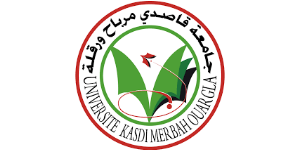دراسة البصمة الكيميائية للغطاء النباتي لمنطقة وادي سوف على العسل النحل
Résumé: Beekeeping is a relatively recent activity in the Oued Souf region, leading to the emergence of new types of honey adapted to the area's vegetation and climate. Among the most prominent plants in the region that serve as primary nectar sources for bees are Zygophyllum album L. and Genista saharae Cosson et Dur. This study aims to determine the botanical origin of honey and investigate the chemical fingerprint of Zygophyllum album L. and Genista saharae Cosson et Dur by analyzing the physicochemical properties of honey and assessing the effects of thermal treatment on these properties. Honey samples were collected from various locations in Oued Souf, particularly the rural areas of Oued El Alenda and Magran, over multiple seasons (2015–2017). The initial analyses involved pollen examination to determine the botanical origin of the honey, while subsequent analyses focused on assessing physicochemical properties before and after thermal treatment at different temperatures: 50°C, 70°C, 80°C, 90°C and for different durations: 3, 6, 9, and 12 hours. Quantitative and qualitative analyses were performed to evaluate the presence of phenolic compounds, sugars, proteins, and organic acids. Additionally, antioxidant capacity and antibacterial activity tests were conducted using spectroscopic and electrochemical techniques, including VOLTALAB 80, UV spectrophotometry, FTIR, and HPLC. The results indicated that the laboratory characteristics of the studied honey samples were within the acceptable limits defined by national and international honey standards. The honey from the rural areas of Magran was classified as monofloral honey, predominantly derived from Zygophyllum album L., with a pollen percentage of 80%. Similarly, the honey from Oued El Alenda was classified as monofloral honey originating from Genista saharae Cosson et Dur, with a pollen percentage of 52%. From a biological perspective, Genista saharae honey exhibited strong antibacterial activity against Staphylococcus aureus, particularly Escherichia coli. In contrast, Zygophyllum album honey demonstrated high antioxidant activity, with a DPPH IC50 value of approximately 20.51 mg/mL. Furthermore, an increase in phenolic and flavonoid content was observed after thermal treatment at 90°C for 12 hours in both Zygophyllum album and Genista saharae honey. The phenolic content in Zygophyllum album honey reached 580.23 mg GAE/kg. Additionally, Genista saharae honey exhibited greater stability against HMF (hydroxymethylfurfural) formation, making it less susceptible to quality degradation compared to Zygophyllum album honey, as HMF content serves as an indicator of honey deterioration
Mots-clès:
Nos services universitaires et académiques
Thèses-Algérie vous propose ses divers services d’édition: mise en page, révision, correction, traduction, analyse du plagiat, ainsi que la réalisation des supports graphiques et de présentation (Slideshows).
Obtenez dès à présent et en toute facilité votre devis gratuit et une estimation de la durée de réalisation et bénéficiez d'une qualité de travail irréprochable et d'un temps de livraison imbattable!


